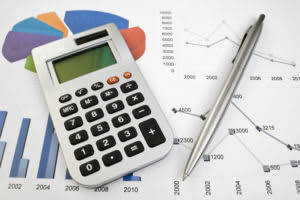
The formula for net book value is the cost of the asset minus accumulated depreciation. Depreciation measures how quickly an asset loses value before it breaks down or becomes obsolete. Accumulated depreciation is the total amount of an asset’s original cost that has been allocated as a depreciation expense in the years since it was first placed into service. Depreciation expense is the amount that was depreciated for a single period.
Step 5: Adjust financial statements
- The issuer received less cash than the face amount of the bond, so the discount increases interest expense.
- They provide transparency into the aging and efficiency of a company’s assets, which is invaluable for internal management and external stakeholders alike.
- Would record a depreciation expense of $5,000 against the delivery truck, with a corresponding credit to the accumulated depreciation account.
- Accumulated depreciation and depreciation expense both track how fixed assets lose value, but they serve different tax purposes.
- A depreciation expense, on the other hand, is the portion of the cost of a fixed asset that was depreciated during a certain period, such as a year.
- Regular reconciliation ensures your contra accounts match actual transactions.
- The provision for doubtful debts is a contra asset account related to debtors.
Depreciation often has tax implications, as businesses can deduct depreciation expenses to reduce taxable income. Companies must adhere to tax regulations and methods, such as Modified Accelerated Cost Recovery System (MACRS) in the U.S., to maximize deductions and maintain compliance. Accumulated depreciation is a cornerstone of accounting for fixed assets, ensuring that their costs are allocated over their useful lives. This approach aligns with the matching principle, which matches expenses to the revenues they help generate, providing a more accurate picture of financial performance. Accumulated depreciation is considered a contra asset because it contains the cumulative total of all depreciation expense recognized on an asset to date. Rather than altering the original cost of the asset, it serves to reduce the asset’s value on the balance sheet, thus representing the asset’s declining value over its useful life.
What is the process of managing contra asset accounts in QuickBooks?

Contra accounts help you meet this standard by showing real economic value. They adjust account balances without erasing the original transaction data. For example, if you buy equipment for $50,000, expect it to last 10 years and estimate a $5,000 salvage value. The deduction would come out to $4,500 each year for 10 years as depreciation expense. The purpose of a contra expense account is to record a reduction in an expense without changing the balance in the main account. The purpose of the Sales Returns account is to track the reduction in the value of the revenue while preserving the original amount of sales revenue.
How does accumulated depreciation impact financial statements?
Nowadays, with the development of a computerized accounting system, it is easy and quick to prepare the contra asset accounts as the system does all the calculations, and hardly anything is pushed manually. However, an accountant or person in charge must ensure that any change in the value of the assets due to revaluation or impairment must be considered. With increasing globalization and companies operating in many countries, the books of accounts must be compatible with a global platform. They are also the result of globally accepted accounting principles for accurately reporting financial numbers.

Our team is ready to learn about your business and guide you to the right solution. Company A estimates that the vehicle’s useful life is 10 years with no residual value. Accurate NBV calculations are critical for compliance with standards from the Financial Accounting Standards Board (FASB) and the International Accounting Standards Board (IASB).

Contra Equity Accounts

These accounts appear in the balance sheet or income statement and ensure transparency in financial reporting. From the perspective of financial analysts, the detailed tracking of contra asset accounts allows for a more nuanced understanding of a company’s operational efficiency and asset management strategies. For auditors, these accounts are crucial in verifying the historical cost of assets and ensuring compliance with accounting standards. Meanwhile, tax professionals contribution margin view contra asset accounts as essential in determining tax liabilities, as they directly impact the calculation of taxable income.

Double Entry Bookkeeping
Additionally, some mistakenly believe accumulated depreciation applies Accounting For Architects to all assets. Intangible assets, such as patents, are amortized rather than depreciated, and land is not subject to depreciation because it has an indefinite useful life. Understanding these distinctions is essential for accurate financial analysis and compliance with accounting standards.
Instead, the balance sheet might say “Property, plant, and equipment – net,” and show the book value of the company’s assets, net of accumulated depreciation. In this case, you may be able to find more details about the book value of the company’s assets and accumulated depreciation in the financial statement disclosures. A contra account is an account with a balance opposite the normal accounts in its category. Contra accounts are usually linked to specific accounts on the balance sheet and are reported as subtractions is accumulated depreciation a contra asset account from these accounts.